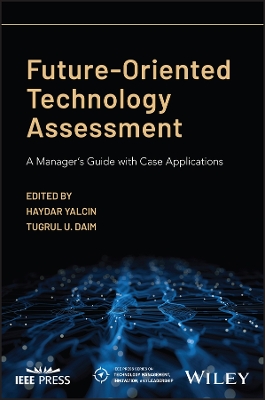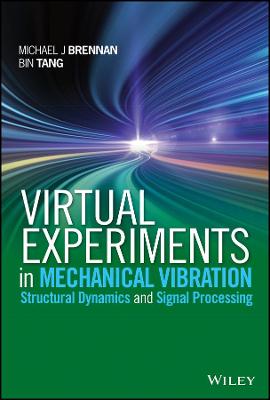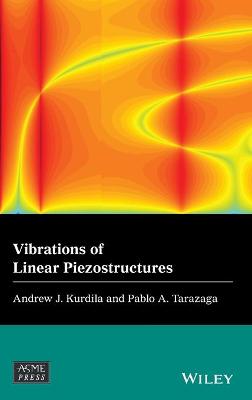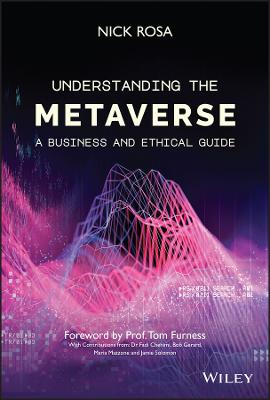Engineering Mechanics
Engineering Mechanics
Dynamics
Tongue, Benson H.; Kawano, Daniel T.
John Wiley & Sons Inc
09/2020
656
Loose-leaf
Inglês
9781119746003
1120
Descrição não disponível.
Chapter 1 Background and Roadmap 1 1.1 Newton's Laws 2 1.2 How You'll Be Approaching Dynamics 3 1.3 Units 5 1.4 Symbols, Notation, and Conventions 7 1.5 Gravitation 13 1.6 A Comprehensive Dynamics Application 14 Chapter 2 Motion of Translating Bodies 17 2.1 Straight-Line Motion 18 Example 2.1 Velocity Determination Via Integration 25 Example 2.2 Deceleration Limit Determination 26 Example 2.3 Constant Acceleration/Speed/Distance Relationship 27 Example 2.4 Position-Dependent Acceleration 28 Example 2.5 Velocity-Dependent Acceleration (A) 30 Example 2.6 Velocity-Dependent Acceleration (B) 31 Exercises 2.1 32 2.2 Cartesian Coordinates 36 Example 2.7 Coordinate Transformation (A) 42 Example 2.8 Coordinate Transformation (B) 43 Example 2.9 Rectilinear Trajectory Determination (A) 44 Example 2.10 Rectilinear Trajectory Determination (B) 46 Exercises 2.2 48 2.3 Polar and Cylindrical Coordinates 52 Example 2.11 Velocity-Polar Coordinates 58 Example 2.12 Acceleration-Polar Coordinates (A) 60 Example 2.13 Acceleration-Polar Coordinates (B) 61 Example 2.14 Velocity And Acceleration-Cylindrical Coordinates 62 Exercises 2.3 64 2.4 Path Coordinates 69 Example 2.15 Analytical Determination of Radius of Curvature 72 Example 2.16 Acceleration-Path Coordinates 74 Example 2.17 Speed Along A Curve 76 Exercises 2.4 78 2.5 Relative Motion and Constraints 82 Example 2.18 One Body Moving on Another 89 Example 2.19 Two Bodies Moving Independently (A) 90 Example 2.20 Two Bodies Moving Independently (B) 91 Example 2.21 Simple Pulley 92 Example 2.22 Double Pulley 93 Exercises 2.5 95 2.6 Just the Facts 101 System Analysis (SA) Exercises 104 Chapter 3 Inertial Response of Translating Bodies 107 3.1 Cartesian Coordinates 108 Example 3.1 Analysis of A Spaceship 110 Example 3.2 Forces Acting on An Airplane 111 Example 3.3 Sliding Ming Bowl 112 Example 3.4 Response of An Underwater Probe 114 Example 3.5 Particle in an Enclosure 116 Exercises 3.1 118 3.2 Polar Coordinates 128 Example 3.6 Ming Bowl on A Moving Slope 129 Example 3.7 Ming Bowl in Motion 130 Example 3.8 Ming Bowl on A Moving Slope With Friction 132 Example 3.9 No-Slip In A Rotating Arm 134 Example 3.10 Forces Acting on A Payload 136 Exercises 3.2 138 3.3 Path Coordinates 144 Example 3.11 Forces Acting on My Car 145 Example 3.12 Finding A Rocket's Radius of Curvature 146 Example 3.13 Force and Acceleration for A Sliding Pebble 148 Example 3.14 Determining Slip Point in A Turn 150 Exercises 3.3 151 3.4 Linear Momentum and Linear Impulse 155 Example 3.15 Changing the Space Shuttle's Orbit 156 Example 3.16 Block on A Sanding Belt 158 Example 3.17 Two-Car Collision 159 Exercises 3.4 160 3.5 Angular Momentum and Angular Impulse 166 Example 3.18 Change In Speed of A Model Plane 169 Example 3.19 Angular Momentum of A Bumper 170 Example 3.20 Angular Momentum of A Tetherball 172 Exercises 3.5 174 3.6 Orbital Mechanics 175 Example 3.21 Analysis of an Elliptical Orbit 188 Example 3.22 Determining Closest Approach Distance 189 Exercises 3.6 190 3.7 Impact 196 Example 3.23 Dynamics of Two Pool Balls 200 Example 3.24 More Pool Ball Dynamics 202 Exercises 3.7 202 3.8 Oblique Impact 205 Example 3.25 Oblique Billiard Ball Collision 207 Example 3.26 Another Oblique Collision 209 Exercises 3.8 212 3.9 Just The Facts 215 System Analysis (SA) Exercises 218 Chapter 4 Energetics of Translating Bodies 221 4.1 Kinetic Energy 222 Example 4.1 Speed of an Arrow 224 Example 4.2 Change in Speed Due to an Applied Force 225 Example 4.3 Change in Speed Due to Slipping 226 Exercises 4.1 228 4.2 Potential Energy 233 Example 4.4 Speed Due to A Drop 237 Example 4.5 Designing A Nutcracker 238 Example 4.6 Change in Speed Using Potential Energy 240 Example 4.7 Falling Enclosure 241 Example 4.8 Reexamination of an Orbital Problem 243 Exercises 4.2 244 4.3 Power 255 Example 4.9 Time Needed to Increase Speed 258 Example 4.10 0 to 60 Time at Constant Power 259 Example 4.11 Determining A Cyclist's Energy Efficiency 260 Exercises 4.3 261 4.4 Just the Facts 265 System Analysis (SA) Exercises 268 Chapter 5 Multibody Systems 269 5.1 Force Balance and Linear Momentum 270 Example 5.1 Finding A Mass Center 274 Example 5.2 Finding A System's Linear Momentum 275 Example 5.3 Motion of A Two-Particle System 276 Example 5.4 Finding Speed of A Bicyclist/Cart 277 Example 5.5 Momentum of A Three-Mass System 278 Exercises 5.1 279 5.2 Angular Momentum 285 Example 5.6 Angular Momentum of Three Particles 288 Example 5.7 Angular Momentum About A System's Mass Center 289 Exercises 5.2 290 5.3 Work and Energy 293 Example 5.8 Kinetic Energy of A Modified Baton 295 Example 5.9 Kinetic Energy of A Translating Modified Baton 296 Example 5.10 Spring-Mass System 297 Exercises 5.3 299 5.4 Stationary Enclosures with Mass Inflow and Outflow 300 Example 5.11 Water Jet Impinging on Stationary Vane 303 Example 5.12 Force Due to A Stream of Mass Particles 304 Exercises 5.4 305 5.5 Nonconstant Mass Systems 311 Example 5.13 Motion of A Toy Rocket 315 Example 5.14 Helicopter Response to A Stream of Bullets 317 Exercises 5.5 318 5.6 Just the Facts 323 System Analysis (SA) Exercises 326 Chapter 6 Kinematics of Rigid Bodies Undergoing Planar Motion 327 6.1 Relative Velocities on A Rigid Body 328 Example 6.1 Velocity of A Pendulum 334 Example 6.2 Velocity of A Constrained Link 335 Example 6.3 Angular Speed of A Spinning Disk 336 Example 6.4 Velocity of Link-Constrained Body 337 Example 6.5 Relative Angular Velocity 338 Exercises 6.1 340 6.2 Instantaneous Center of Rotation (ICR) 347 Example 6.6 Angular Speed Determination Via ICR 348 Example 6.7 Velocity on A Constrained Body Via ICR 350 Example 6.8 Velocity of the Contact Point During Roll Without Slip 351 Example 6.9 Pedaling Cadence and Bicycle Speed 352 Example 6.10 Rotation Rate of An Unwinding Reel Via ICR 354 Exercises 6.2 355 6.3 Rotating Reference Frames and Rigid-Body Accelerations 360 Example 6.11 Acceleration of A Pedal Spindle 363 Example 6.12 Acceleration During Roll Without Slip 364 Example 6.13 Tip Acceleration of A Two-Link Manipulator 365 Example 6.14 Acceleration of A Point on A Cog of A Moving Bicycle 367 Example 6.15 Path of Point on Rolling Disk 369 Exercises 6.3 370 6.4 Relative Motion on A Rigid Body 375 Example 6.16 Absolute Velocity of A Specimen In A Centrifuge 379 Example 6.17 Velocity Constraints-Closing Scissors 380 Example 6.18 Velocity and Acceleration In A Tube 381 Example 6.19 Angular Acceleration of A Constrained Body 383 Example 6.20 Angular Acceleration 385 Exercises 6.4 386 6.5 Just the Facts 393 System Analysis (SA) Exercises 395 Chapter 7 Kinetics of Rigid Bodies Undergoing Two-Dimensional Motions 397 7.1 Curvilinear Translation 398 Example 7.1 Determining the Acceleration of A Translating Body 399 Example 7.2 Tension In Support Chains 400 Example 7.3 General Motion of A Swinging Sign 403 Example 7.4 Normal Forces on A Steep Hill 406 Exercises 7.1 408 7.2 Rotation About A Fixed Point 412 Example 7.5 Mass Moment of Inertia of A Rectangular Plate 417 Example 7.6 Mass Moment of Inertia of A Circular Sector 418 Example 7.7 Mass Moment of Inertia of A Complex Disk 421 Example 7.8 Analysis of A Rotating Body 422 Example 7.9 Forces Acting at Pivot of Fireworks Display 425 Example 7.10 Determining A Wheel's Imbalance Eccentricity 428 Exercises 7.2 429 7.3 General Motion 439 Example 7.11 Acceleration Response of an Unrestrained Body 442 Example 7.12 Response of A Falling Rod 446 Example 7.13 More Response of A Falling Rod 448 Example 7.14 Acceleration Response of A Driven Wheel 450 Example 7.15 Acceleration Response of A Driven Wheel-Take Two 452 Example 7.16 Falling Spool 455 Example 7.17 Tipping of A Ming Vase 456 Example 7.18 Equations of Motion for A Simple Car Model 459 Example 7.19 Analysis of A Simple Transmission 461 Exercises 7.3 463 7.4 Linear/Angular Momentum of Two-Dimensional Rigid Bodies 476 Example 7.20 Angular Impulse Applied to Space Station 478 Example 7.21 Impact Between A Pivoted Rod and A Moving Particle 479 Exercises 7.4 481 7.5 Work/Energy of Two-Dimensional Rigid Bodies 487 Example 7.22 Angular Speed of A Hinged Two-Dimensional Body 488 Example 7.23 Response of A Falling Rod Via Energy 490 Example 7.24 Design of A Spring-Controlled Drawbridge 491 Exercises 7.5 493 7.6 Just The Facts 500 System Analysis (SA) Exercises 502 Chapter 8 Kinematics and Kinetics of Rigid Bodies In Threedimensional Motion 505 8.1 Spherical Coordinates 506 8.2 Angular Velocity of Rigid Bodies in Three-Dimensional Motion 508 Example 8.1 Angular Velocity of A Simplified Gyroscope 512 Example 8.2 Angular Velocity of A Hinged Plate 513 8.3 Angular Acceleration of Rigid Bodies in Three-Dimensional Motion 514 Example 8.3 Angular Acceleration of A Simple Gyroscope 515 8.4 General Motion of and on Three-Dimensional Bodies 516 Example 8.4 Motion of A Disk Attached to A Bent Shaft 517 Example 8.5 Velocity and Acceleration of A Robotic Manipulator 520 Exercises 8.4 522 8.5 Moments and Products of Inertia for A Three-Dimensional Body 527 8.6 Parallel Axis Expressions For Inertias 530 Example 8.6 Inertial Properties of A Flat Plate 532 Exercises 8.6 533 8.7 Angular Momentum 535 Example 8.7 Angular Momentum of A Flat Plate 540 Example 8.8 Angular Momentum of A Simple Structure 540 Exercises 8.7 542 8.8 Equations of Motion For A Three-Dimensional Body 544 Example 8.9 Reaction Forces of A Constrained, Rotating Body 546 Exercises 8.8 548 8.9 Energy of Three-Dimensional Bodies 553 Example 8.10 Kinetic Energy of A Rotating Disk 555 Exercises 8.9 557 8.10 Just The Facts 559 System Analysis (SA) Exercises 563 Chapter 9 Vibratory Motions 565 9.1 Undamped, Free Response for Single-Degreeof-Freedom Systems 566 Example 9.1 Natural Frequency of A Cantilevered Balcony 569 Example 9.2 Displacement Response of A Single-Story Building 572 Exercises 9.1 573 9.2 Undamped, Sinusoidally Forced Response for Single-Degree-of-Freedom Systems 580 Example 9.3 Forced Response of A Spring-Mass System 582 Example 9.4 Time Response of an Undamped System 583 Exercises 9.2 584 9.3 Damped, Free Response for Single-Degree-ofFreedom Systems 588 Example 9.5 Vibration Response of A Golf Club 591 Exercises 9.3 592 9.4 Damped, Sinusoidally Forced Response for Single-Degree-of-Freedom Systems 593 Example 9.6 Response of A Simple Car Model on A Wavy Road 596 Example 9.7 Response of A Sinusoidally Forced, Spring-Mass Damper 598 Exercises 9.4 599 9.5 Just The Facts 600 System Analysis (SA) Exercises 603 Appendix A Numerical Integration Light 605 Appendix B Properties of Plane and Solid Bodies 613 Appendix C Some Useful Mathematical Facts 617 Appendix D Material Densities 621 Biblography 623 Index 625
Este título pertence ao(s) assunto(s) indicados(s). Para ver outros títulos clique no assunto desejado.
time work; students ability; material; engineering mechanics; user friendliness; presentation; authors; students; rigor; aids; mystery; air; dynamics; discussion; sense; text; frustration; logic
Chapter 1 Background and Roadmap 1 1.1 Newton's Laws 2 1.2 How You'll Be Approaching Dynamics 3 1.3 Units 5 1.4 Symbols, Notation, and Conventions 7 1.5 Gravitation 13 1.6 A Comprehensive Dynamics Application 14 Chapter 2 Motion of Translating Bodies 17 2.1 Straight-Line Motion 18 Example 2.1 Velocity Determination Via Integration 25 Example 2.2 Deceleration Limit Determination 26 Example 2.3 Constant Acceleration/Speed/Distance Relationship 27 Example 2.4 Position-Dependent Acceleration 28 Example 2.5 Velocity-Dependent Acceleration (A) 30 Example 2.6 Velocity-Dependent Acceleration (B) 31 Exercises 2.1 32 2.2 Cartesian Coordinates 36 Example 2.7 Coordinate Transformation (A) 42 Example 2.8 Coordinate Transformation (B) 43 Example 2.9 Rectilinear Trajectory Determination (A) 44 Example 2.10 Rectilinear Trajectory Determination (B) 46 Exercises 2.2 48 2.3 Polar and Cylindrical Coordinates 52 Example 2.11 Velocity-Polar Coordinates 58 Example 2.12 Acceleration-Polar Coordinates (A) 60 Example 2.13 Acceleration-Polar Coordinates (B) 61 Example 2.14 Velocity And Acceleration-Cylindrical Coordinates 62 Exercises 2.3 64 2.4 Path Coordinates 69 Example 2.15 Analytical Determination of Radius of Curvature 72 Example 2.16 Acceleration-Path Coordinates 74 Example 2.17 Speed Along A Curve 76 Exercises 2.4 78 2.5 Relative Motion and Constraints 82 Example 2.18 One Body Moving on Another 89 Example 2.19 Two Bodies Moving Independently (A) 90 Example 2.20 Two Bodies Moving Independently (B) 91 Example 2.21 Simple Pulley 92 Example 2.22 Double Pulley 93 Exercises 2.5 95 2.6 Just the Facts 101 System Analysis (SA) Exercises 104 Chapter 3 Inertial Response of Translating Bodies 107 3.1 Cartesian Coordinates 108 Example 3.1 Analysis of A Spaceship 110 Example 3.2 Forces Acting on An Airplane 111 Example 3.3 Sliding Ming Bowl 112 Example 3.4 Response of An Underwater Probe 114 Example 3.5 Particle in an Enclosure 116 Exercises 3.1 118 3.2 Polar Coordinates 128 Example 3.6 Ming Bowl on A Moving Slope 129 Example 3.7 Ming Bowl in Motion 130 Example 3.8 Ming Bowl on A Moving Slope With Friction 132 Example 3.9 No-Slip In A Rotating Arm 134 Example 3.10 Forces Acting on A Payload 136 Exercises 3.2 138 3.3 Path Coordinates 144 Example 3.11 Forces Acting on My Car 145 Example 3.12 Finding A Rocket's Radius of Curvature 146 Example 3.13 Force and Acceleration for A Sliding Pebble 148 Example 3.14 Determining Slip Point in A Turn 150 Exercises 3.3 151 3.4 Linear Momentum and Linear Impulse 155 Example 3.15 Changing the Space Shuttle's Orbit 156 Example 3.16 Block on A Sanding Belt 158 Example 3.17 Two-Car Collision 159 Exercises 3.4 160 3.5 Angular Momentum and Angular Impulse 166 Example 3.18 Change In Speed of A Model Plane 169 Example 3.19 Angular Momentum of A Bumper 170 Example 3.20 Angular Momentum of A Tetherball 172 Exercises 3.5 174 3.6 Orbital Mechanics 175 Example 3.21 Analysis of an Elliptical Orbit 188 Example 3.22 Determining Closest Approach Distance 189 Exercises 3.6 190 3.7 Impact 196 Example 3.23 Dynamics of Two Pool Balls 200 Example 3.24 More Pool Ball Dynamics 202 Exercises 3.7 202 3.8 Oblique Impact 205 Example 3.25 Oblique Billiard Ball Collision 207 Example 3.26 Another Oblique Collision 209 Exercises 3.8 212 3.9 Just The Facts 215 System Analysis (SA) Exercises 218 Chapter 4 Energetics of Translating Bodies 221 4.1 Kinetic Energy 222 Example 4.1 Speed of an Arrow 224 Example 4.2 Change in Speed Due to an Applied Force 225 Example 4.3 Change in Speed Due to Slipping 226 Exercises 4.1 228 4.2 Potential Energy 233 Example 4.4 Speed Due to A Drop 237 Example 4.5 Designing A Nutcracker 238 Example 4.6 Change in Speed Using Potential Energy 240 Example 4.7 Falling Enclosure 241 Example 4.8 Reexamination of an Orbital Problem 243 Exercises 4.2 244 4.3 Power 255 Example 4.9 Time Needed to Increase Speed 258 Example 4.10 0 to 60 Time at Constant Power 259 Example 4.11 Determining A Cyclist's Energy Efficiency 260 Exercises 4.3 261 4.4 Just the Facts 265 System Analysis (SA) Exercises 268 Chapter 5 Multibody Systems 269 5.1 Force Balance and Linear Momentum 270 Example 5.1 Finding A Mass Center 274 Example 5.2 Finding A System's Linear Momentum 275 Example 5.3 Motion of A Two-Particle System 276 Example 5.4 Finding Speed of A Bicyclist/Cart 277 Example 5.5 Momentum of A Three-Mass System 278 Exercises 5.1 279 5.2 Angular Momentum 285 Example 5.6 Angular Momentum of Three Particles 288 Example 5.7 Angular Momentum About A System's Mass Center 289 Exercises 5.2 290 5.3 Work and Energy 293 Example 5.8 Kinetic Energy of A Modified Baton 295 Example 5.9 Kinetic Energy of A Translating Modified Baton 296 Example 5.10 Spring-Mass System 297 Exercises 5.3 299 5.4 Stationary Enclosures with Mass Inflow and Outflow 300 Example 5.11 Water Jet Impinging on Stationary Vane 303 Example 5.12 Force Due to A Stream of Mass Particles 304 Exercises 5.4 305 5.5 Nonconstant Mass Systems 311 Example 5.13 Motion of A Toy Rocket 315 Example 5.14 Helicopter Response to A Stream of Bullets 317 Exercises 5.5 318 5.6 Just the Facts 323 System Analysis (SA) Exercises 326 Chapter 6 Kinematics of Rigid Bodies Undergoing Planar Motion 327 6.1 Relative Velocities on A Rigid Body 328 Example 6.1 Velocity of A Pendulum 334 Example 6.2 Velocity of A Constrained Link 335 Example 6.3 Angular Speed of A Spinning Disk 336 Example 6.4 Velocity of Link-Constrained Body 337 Example 6.5 Relative Angular Velocity 338 Exercises 6.1 340 6.2 Instantaneous Center of Rotation (ICR) 347 Example 6.6 Angular Speed Determination Via ICR 348 Example 6.7 Velocity on A Constrained Body Via ICR 350 Example 6.8 Velocity of the Contact Point During Roll Without Slip 351 Example 6.9 Pedaling Cadence and Bicycle Speed 352 Example 6.10 Rotation Rate of An Unwinding Reel Via ICR 354 Exercises 6.2 355 6.3 Rotating Reference Frames and Rigid-Body Accelerations 360 Example 6.11 Acceleration of A Pedal Spindle 363 Example 6.12 Acceleration During Roll Without Slip 364 Example 6.13 Tip Acceleration of A Two-Link Manipulator 365 Example 6.14 Acceleration of A Point on A Cog of A Moving Bicycle 367 Example 6.15 Path of Point on Rolling Disk 369 Exercises 6.3 370 6.4 Relative Motion on A Rigid Body 375 Example 6.16 Absolute Velocity of A Specimen In A Centrifuge 379 Example 6.17 Velocity Constraints-Closing Scissors 380 Example 6.18 Velocity and Acceleration In A Tube 381 Example 6.19 Angular Acceleration of A Constrained Body 383 Example 6.20 Angular Acceleration 385 Exercises 6.4 386 6.5 Just the Facts 393 System Analysis (SA) Exercises 395 Chapter 7 Kinetics of Rigid Bodies Undergoing Two-Dimensional Motions 397 7.1 Curvilinear Translation 398 Example 7.1 Determining the Acceleration of A Translating Body 399 Example 7.2 Tension In Support Chains 400 Example 7.3 General Motion of A Swinging Sign 403 Example 7.4 Normal Forces on A Steep Hill 406 Exercises 7.1 408 7.2 Rotation About A Fixed Point 412 Example 7.5 Mass Moment of Inertia of A Rectangular Plate 417 Example 7.6 Mass Moment of Inertia of A Circular Sector 418 Example 7.7 Mass Moment of Inertia of A Complex Disk 421 Example 7.8 Analysis of A Rotating Body 422 Example 7.9 Forces Acting at Pivot of Fireworks Display 425 Example 7.10 Determining A Wheel's Imbalance Eccentricity 428 Exercises 7.2 429 7.3 General Motion 439 Example 7.11 Acceleration Response of an Unrestrained Body 442 Example 7.12 Response of A Falling Rod 446 Example 7.13 More Response of A Falling Rod 448 Example 7.14 Acceleration Response of A Driven Wheel 450 Example 7.15 Acceleration Response of A Driven Wheel-Take Two 452 Example 7.16 Falling Spool 455 Example 7.17 Tipping of A Ming Vase 456 Example 7.18 Equations of Motion for A Simple Car Model 459 Example 7.19 Analysis of A Simple Transmission 461 Exercises 7.3 463 7.4 Linear/Angular Momentum of Two-Dimensional Rigid Bodies 476 Example 7.20 Angular Impulse Applied to Space Station 478 Example 7.21 Impact Between A Pivoted Rod and A Moving Particle 479 Exercises 7.4 481 7.5 Work/Energy of Two-Dimensional Rigid Bodies 487 Example 7.22 Angular Speed of A Hinged Two-Dimensional Body 488 Example 7.23 Response of A Falling Rod Via Energy 490 Example 7.24 Design of A Spring-Controlled Drawbridge 491 Exercises 7.5 493 7.6 Just The Facts 500 System Analysis (SA) Exercises 502 Chapter 8 Kinematics and Kinetics of Rigid Bodies In Threedimensional Motion 505 8.1 Spherical Coordinates 506 8.2 Angular Velocity of Rigid Bodies in Three-Dimensional Motion 508 Example 8.1 Angular Velocity of A Simplified Gyroscope 512 Example 8.2 Angular Velocity of A Hinged Plate 513 8.3 Angular Acceleration of Rigid Bodies in Three-Dimensional Motion 514 Example 8.3 Angular Acceleration of A Simple Gyroscope 515 8.4 General Motion of and on Three-Dimensional Bodies 516 Example 8.4 Motion of A Disk Attached to A Bent Shaft 517 Example 8.5 Velocity and Acceleration of A Robotic Manipulator 520 Exercises 8.4 522 8.5 Moments and Products of Inertia for A Three-Dimensional Body 527 8.6 Parallel Axis Expressions For Inertias 530 Example 8.6 Inertial Properties of A Flat Plate 532 Exercises 8.6 533 8.7 Angular Momentum 535 Example 8.7 Angular Momentum of A Flat Plate 540 Example 8.8 Angular Momentum of A Simple Structure 540 Exercises 8.7 542 8.8 Equations of Motion For A Three-Dimensional Body 544 Example 8.9 Reaction Forces of A Constrained, Rotating Body 546 Exercises 8.8 548 8.9 Energy of Three-Dimensional Bodies 553 Example 8.10 Kinetic Energy of A Rotating Disk 555 Exercises 8.9 557 8.10 Just The Facts 559 System Analysis (SA) Exercises 563 Chapter 9 Vibratory Motions 565 9.1 Undamped, Free Response for Single-Degreeof-Freedom Systems 566 Example 9.1 Natural Frequency of A Cantilevered Balcony 569 Example 9.2 Displacement Response of A Single-Story Building 572 Exercises 9.1 573 9.2 Undamped, Sinusoidally Forced Response for Single-Degree-of-Freedom Systems 580 Example 9.3 Forced Response of A Spring-Mass System 582 Example 9.4 Time Response of an Undamped System 583 Exercises 9.2 584 9.3 Damped, Free Response for Single-Degree-ofFreedom Systems 588 Example 9.5 Vibration Response of A Golf Club 591 Exercises 9.3 592 9.4 Damped, Sinusoidally Forced Response for Single-Degree-of-Freedom Systems 593 Example 9.6 Response of A Simple Car Model on A Wavy Road 596 Example 9.7 Response of A Sinusoidally Forced, Spring-Mass Damper 598 Exercises 9.4 599 9.5 Just The Facts 600 System Analysis (SA) Exercises 603 Appendix A Numerical Integration Light 605 Appendix B Properties of Plane and Solid Bodies 613 Appendix C Some Useful Mathematical Facts 617 Appendix D Material Densities 621 Biblography 623 Index 625
Este título pertence ao(s) assunto(s) indicados(s). Para ver outros títulos clique no assunto desejado.







